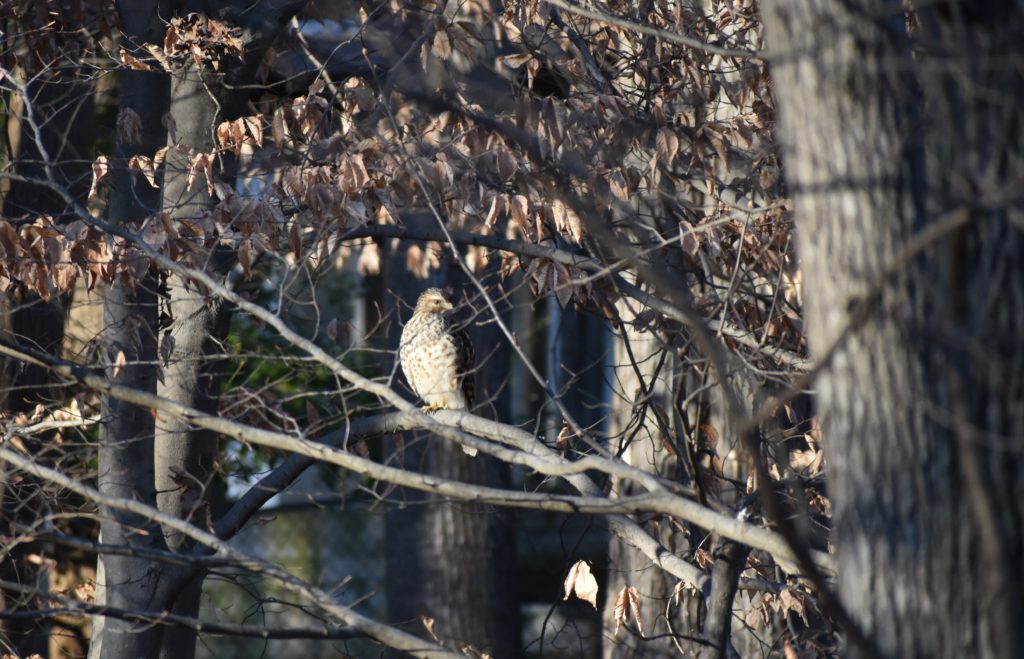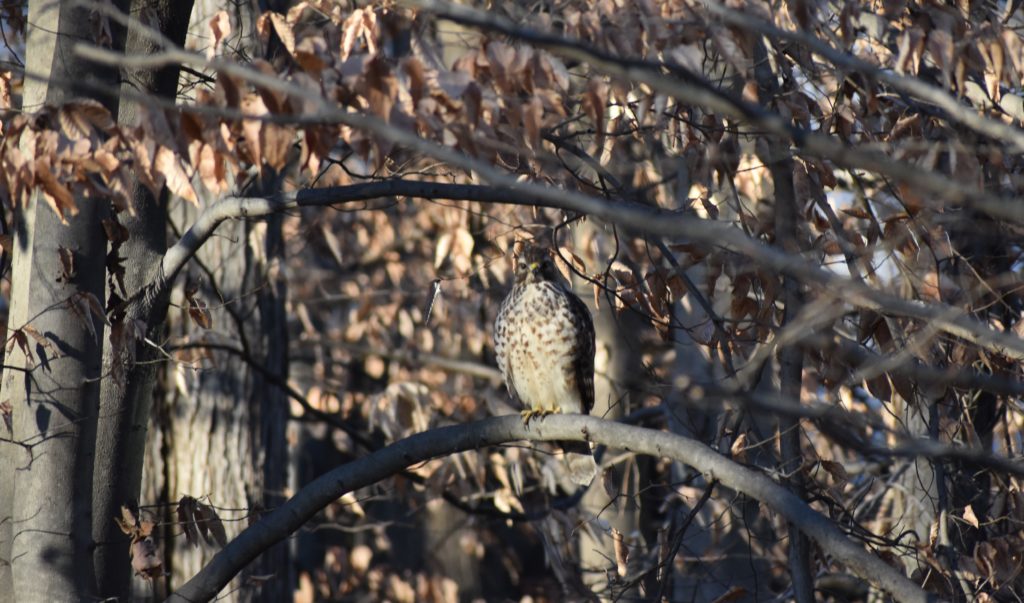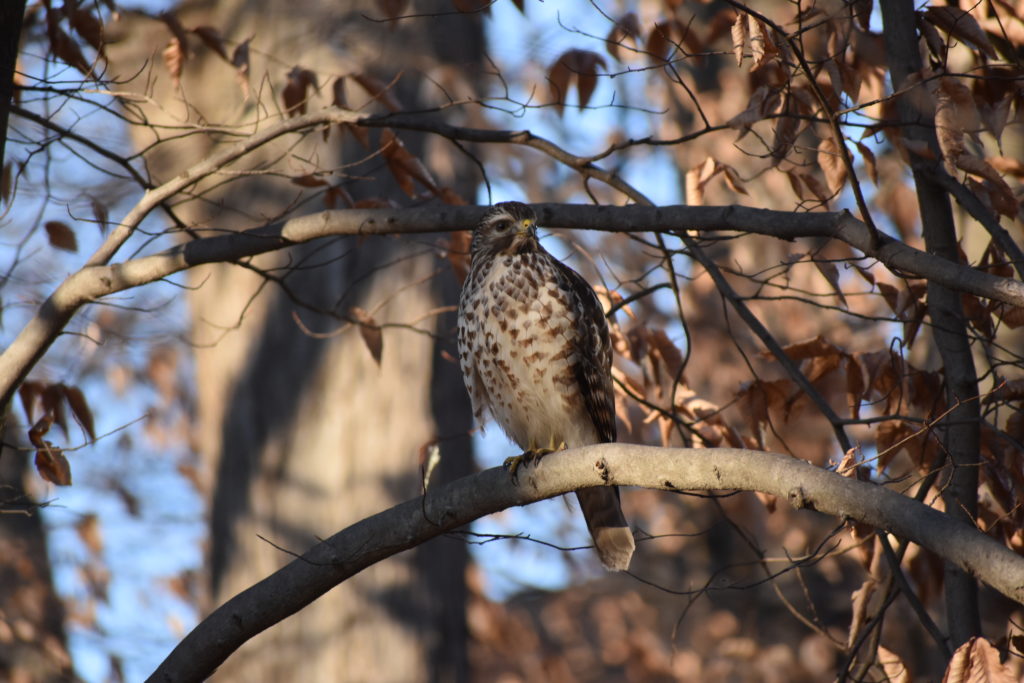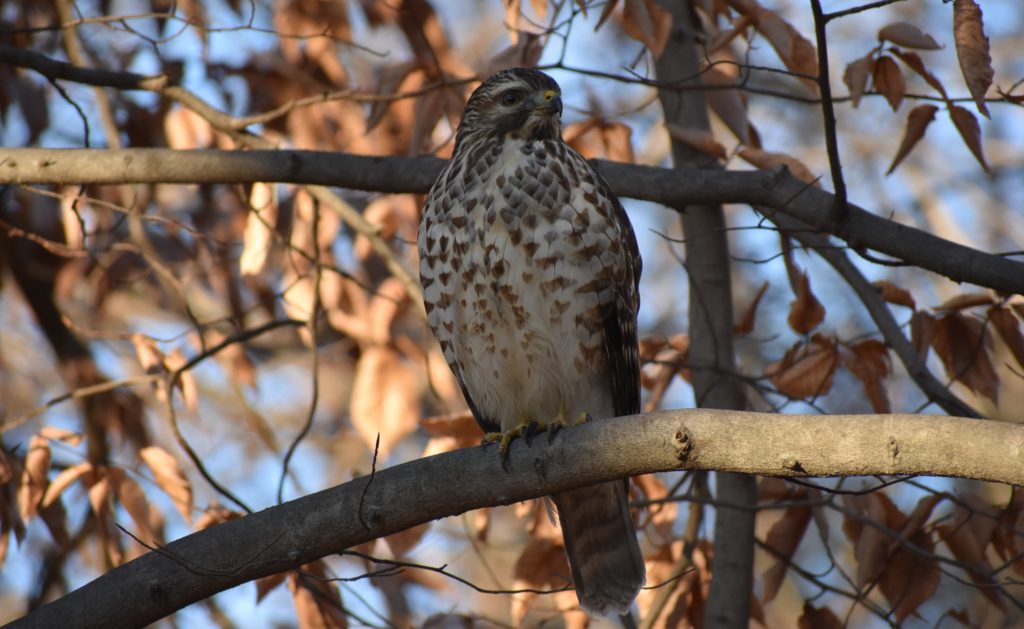Hi River Roaders,
Those of you who are still stopping by RRUUC know that it’s not unusual to see my silver Subaru parked in the back. Maybe I’m working, maybe I’m sitting on one of the benches, just hanging out.
That’s what I was doing last Thursday, around 5pm. I was sitting on the memorial bench in the rear grounds, watching the light and shadows from the sun setting in the west. It was a quiet afternoon – no flocks of robins which can be common this time of year. Even though it was quiet, I felt like I needed to stay.

Then I noticed that a medium sized hawk had just perched in a beech tree over the second spring. It was pretty far away and I didn’t have my binoculars (just my camera), and I thought I was looking at a juvenile Cooper’s Hawk because of the size and the bright stripe above the eye. Feeling emboldened, I moved in closer.

We were definitely checking each other out. Life as a first winter raptor can be rough and mortality can be high as they learn to hunt and avoid human hazards. A lot of folks have been posting “hawk by the bird feeder” photos on Facebook recently, and inevitably they are first winter birds who haven’t figured out yet that you can’t catch birds by sitting out in the open on a bird feeder.

I walked closer yet, as it was almost sunset and the light was starting to fade. I noticed the rounded tail, which is consistent with a Cooper’s Hawk, but it was looking quite chunky. It was also spending a lot of time looking down, which is something that Buteos, like Red-tailed and Red-shouldered hawks do.

I took this last picture a few minutes before sunset, with the last light hitting the beech leaves, just before it flew off. It’s unusual that a hawk would allow me to get this close, but this was a young bird.
Identifying first winter hawks can be hard, as they inevitably have brown and white streaked breasts. Barbara and I spent some time discussing what this bird is. I have come down on Red-shouldered hawk, which are common and like wet areas. Barbara notes that it looks a lot like a first winter Broad-shouldered hawk, but they migrate to South and Central American in early fall. Any birders out there can drop me a note on what you think it is.
If you can, I encourage you to just hang out in a quality outdoor space and be observant to the sights, sounds, and smells. Inevitably you will take back a memory that can help carry you forward.
Till next week,
Joe
